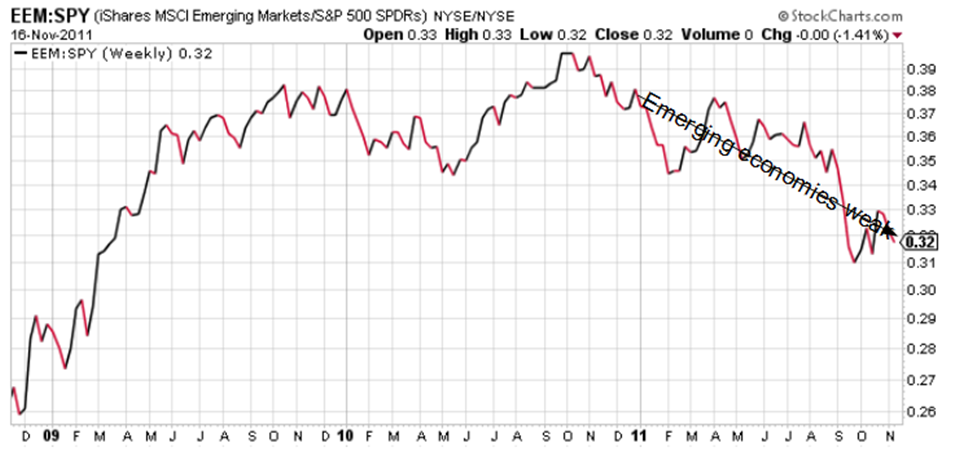The Small-Big/Domestic-International Disconnect
I tend to focus my attention on market internals through relative price ratio analysis to identify if certain consistent messages are occurring beneath the market’s surface. Intermarket analysis, which attempts to look within and across markets, requires analyzing not just a single sector or asset class, but several to see if investors are consciously or unconsciously sending messages through price movement.
This has certainly been a tumultuous year because of lingering fears over Europe, but despite the volatility, the S&P 500 as of writing has essentially gone no where (SPY, the S&P 500 ETF, is literally up about 0.08%). The Russell 2000 (IWM), however, for the year has fared worse, down about 5.9% and strongly underperforming. If you believe that markets here in the U.S. have been suffering because of economic concerns over the Eurozone, that spread differential should not make any sense.
Consider the following. From a market-cap perspective, small-cap stocks (IWM) tend to be more sensitive to the domestic economy than anything happening overseas. Intuitively this should make sense because globalization is driven by the biggest and most cash-rich companies in the world. In contrast, large-cap stocks (SPY) actually have quite a bit of exposure to overseas markets, with some estimates suggesting about half of the S&P 500’s revenue coming from outside the U.S.
Well wait a minute – if the volatility is being caused because of Eurozone recession/depression/implosion concerns, then why are large-cap companies which have so much exposure to revenue coming from overseas markets outperforming small-cap companies which are more sensitive to the U.S? Could it be that broad market averages are unjustified at these levels given conflicting messages from Europe, Emerging Markets, and U.S. small-cap stocks?
Small/Big (IWM/SPY) Price Ratio

Europe/U.S. (VEA/SPY) Price Ratio

Emerging/U.S. (EEM/SPY) Price Ratio

>~~~
Michael A. Gayed, CFA is Chief Investment Strategist at Pension Partners, where he structures portfolios. Prior to this role, Michael served as a Portfolio Manager for a large international investment group, trading long/short investment ideas in an effort to capture excess returns. In 2007, he launched his own long/short hedge fund, using various trading strategies focused on taking advantage of stock market anomalies. Michael earned his B.S. from New York University, and is a CFA Charterholder.


What's been said:
Discussions found on the web: